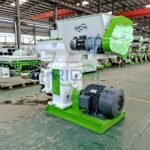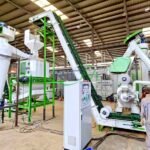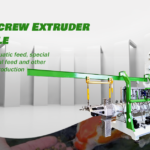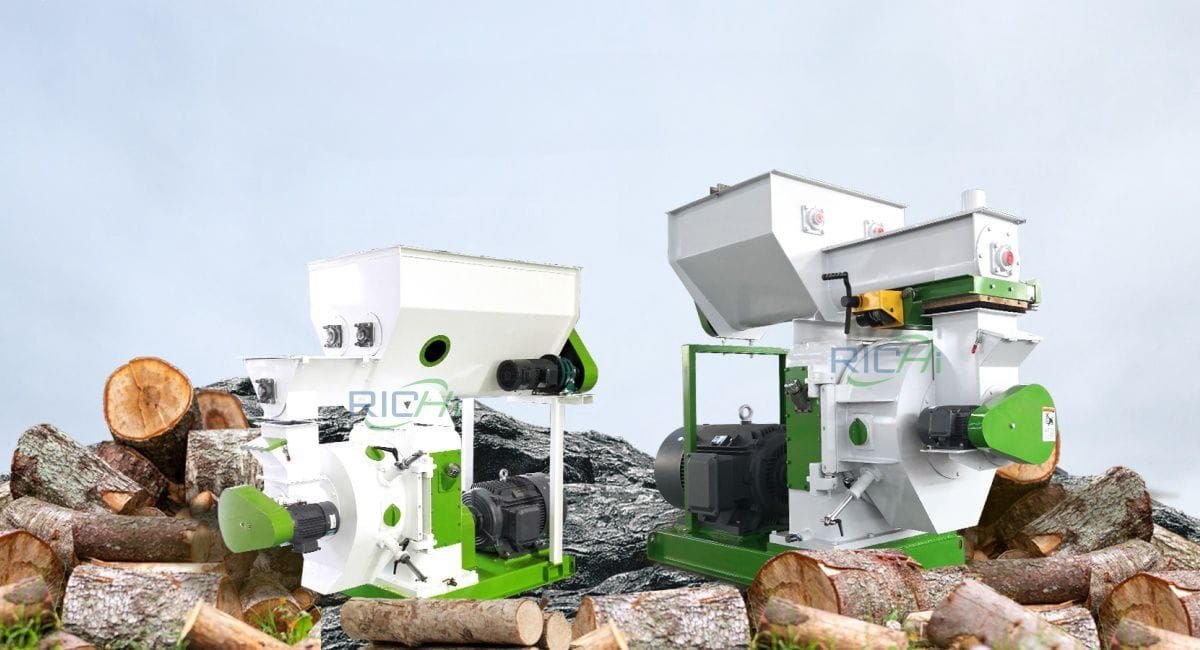Mastication Fuel Treatments
Mastication, or mulching, is a mechanical fuel treatment that changes the structure and size of fuels in the stand. Trees and understory vegetation are chopped, ground, or chipped, and the resulting material is left on the soil surface. Converting 20 tons per acre of understory biomass into small pieces would produce a uniform layer about 1 inch deep across the stand.
From a fuels perspective, the total fuel loading is not immediately affected. However, the vertical height of the fuels is lowered, and more fuel volume is shifted into 1- and 10-hour size classes. Ongoing studies will determine the effect of mastication on subsequent fire behavior and nutrient cycling.
Mastication Equipment
A wide variety of mastication equipment provides tools to match the requirements of nearly any treatment. Some machines have tracks; some have wheels; some have the cutting head mounted on a boom. Windell and Bradshaw (2000) provide a catalog illustrating many of the current equipment designs.
A primary design variation is the type of cutterheadóvertical shaft or horizontal shaft. Vertical shaft cutters are essentially giant lawnmowers. They tend to be less expensive to operate but are more limited in the diameter of material that can be treated, and they tend to produce a coarser chunk. Horizontal shaft cutterheads, in contrast, produce smaller chips and can treat larger stems but tend to cost more to operate.
Another key design variation is the type of base machine on which the cutterhead
is attached. The type of base machine is a critical factor that affects the amount of soil disturbance, operational slope limitations, and operating cost. Each has plusses and minuses that should be considered in specific management applications.
There are some specialized, very low ground pressure tracked machines that can be used on sensitive or soft soils to minimize soil disturbance. For steep slopes, there are self-leveling tracked machines and modified walking excavators.
There are small tracked or wheeled machines that can operate in tight spaces. Boom-type machines can significantly reduce the amount of area disturbed and can also operate the cutter in tight spacing. Wheeled machines are generally faster and less expensive to operate.
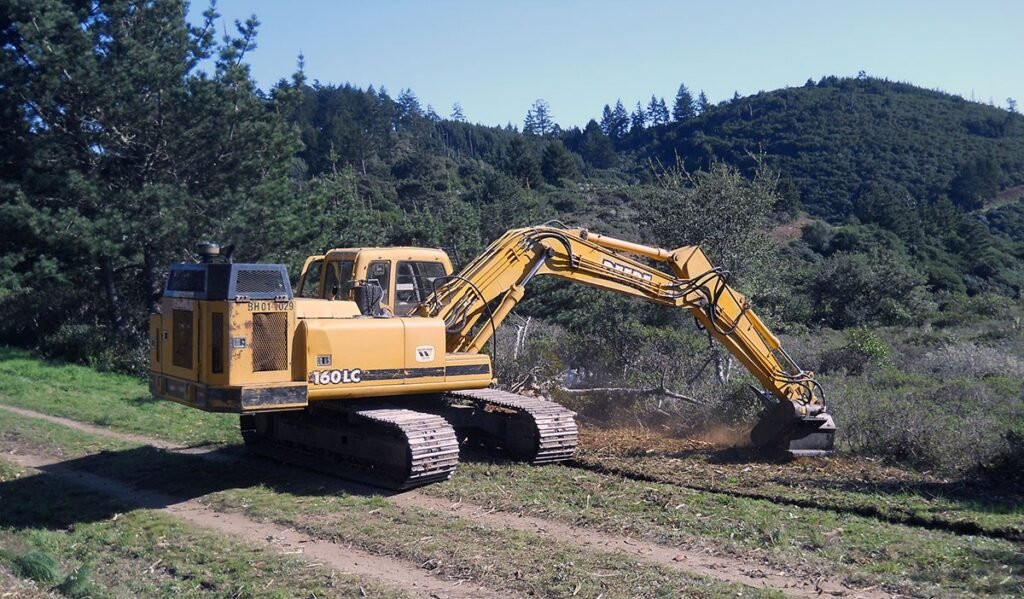
Where Is Mastication Used?
Mastication is more than simply mowing. It is a fuel and silvicultural treatment that should be designed to achieve desired ecological conditions. It can be used as either a surrogate for fire or as a pretreatment for reintroducing fire in overstocked stands.
There are many situations where the use of fire as a stand management tool is not desirable. Some examples may be around structures in the wildland-urban interface, along rights-of-way for utilities or transportation, or in areas where air quality constraints limit burning.
As a fire surrogate, mastication may become a recurring treatment (like a fire return cycle) to control vegetation, particularly with hardwoods that coppice vigorously. It may be necessary to cut and grind some larger diameter stems in the initial entry. Generally, fire surrogate prescriptions would specify a smaller residual fuel size in order to speed decomposition.
In contrast, mastication as a pretreatment for reintroducing fire should be designed to get the stand in a condition that allows larger burning windows and/or shifts the expected fire behavior toward more controllable conditions.
Where mastication will be followed by fire, it is not necessary to reduce everything to small pieces. Some of the stand can be treated with fire. For example, isolated patches of understory that are difficult to masticate may be left. Vertical shaft cutterheads may be a better
match in these conditions.
Treatment Factors Affecting Cost
Actual costs have ranged from hundreds to thousands of dollars per acre. Some areas, such as steep slopes, can be expensive to treat. However, many factors that affect costs can be controlled by the prescription. Some key things to consider:
Minimize the amount of volume treated
- Leaving 3 inches and larger stems provides course woody debris and helps to optimize efficiency.
- Donít use masticators as feller-bunchers.
- For big machines, mastication is typically inefficient at 25 tons per acre or greater.
- Specify the largest acceptable resulting fuel sizes.
Minimize constraints on travel
- Avoid treatment areas narrower than a chain lengthó66 feet wide.
- Try to avoid operating in dense residual stands greater than 100 trees per acre.
- Minimize areas of steep slope (20 percent or greater) or broken terrain.
- Donít apply soil disturbance constraints unless necessary.
Provide adequate access for service
- Equipment requires road access for fueling and


